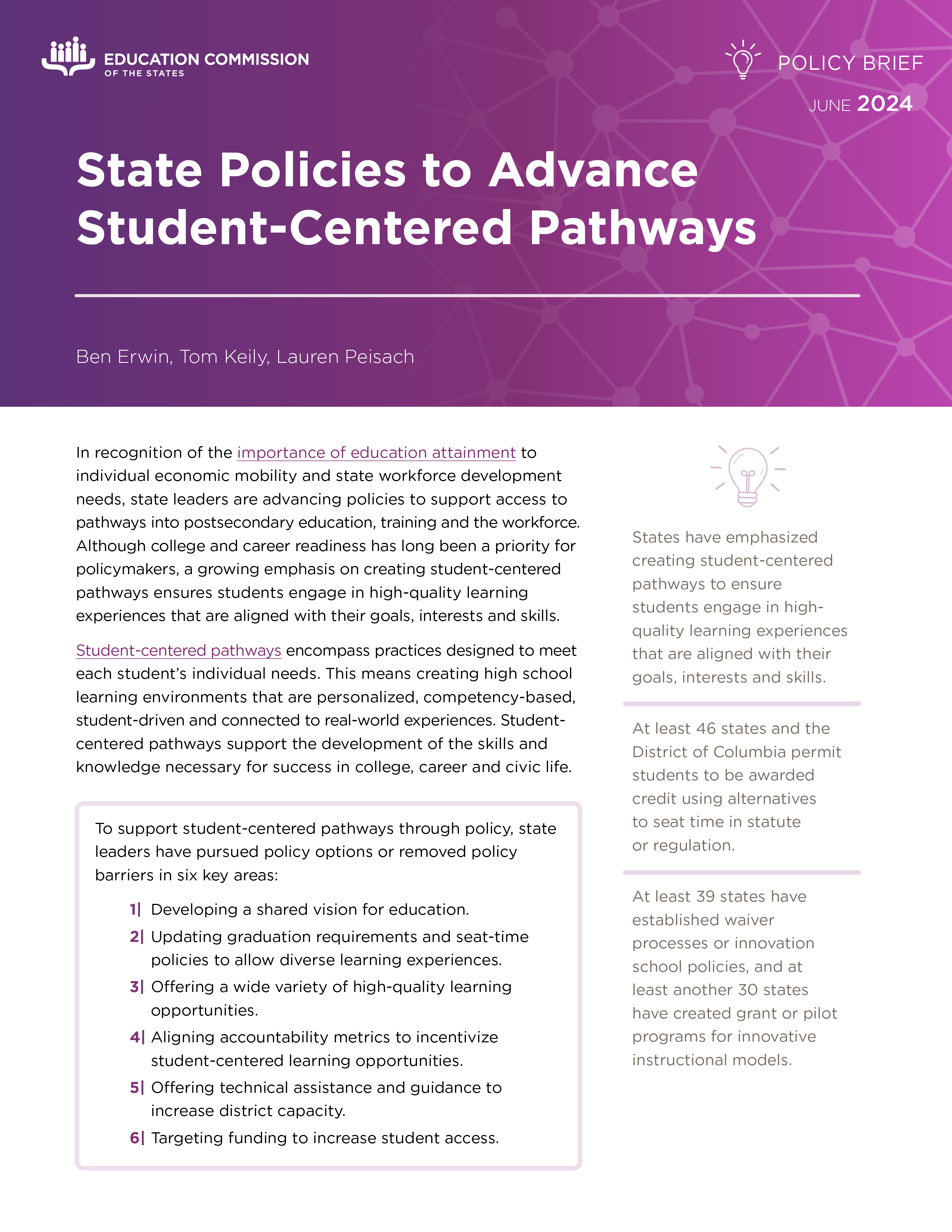Student-centered pathways are designed to meet each student’s individual needs. These pathways require high school learning environments that are personalized, competency-based, student-driven and connected to real-world experiences. Student-centered pathways support the development of the skills and knowledge needed to succeed in college, career and civic life.
Recognizing the importance of education attainment to economic mobility and workforce development needs, state leaders have increasingly looked to student-centered pathways to ensure students engage in high-quality learning experiences that are aligned with their goals, interests and skills.
Informed by a 50-state policy scan, this Policy Brief highlights six key areas that state leaders have pursued policy options or removed policy barriers in to support student-centered pathways. Each section is informed by a 50-state policy scan and state examples are included throughout.
Interested in learning more?
See our Policy Outlines on State Policy Ecosystem for Student-Centered Pathways, Policy Approaches to Competency-Based Education and State Policies to Support Student-Centered Learning.
Also, check out our 50-State Comparisons on States’ School Accountability System, Secondary Career and Technical Education and Work-Based Learning.



